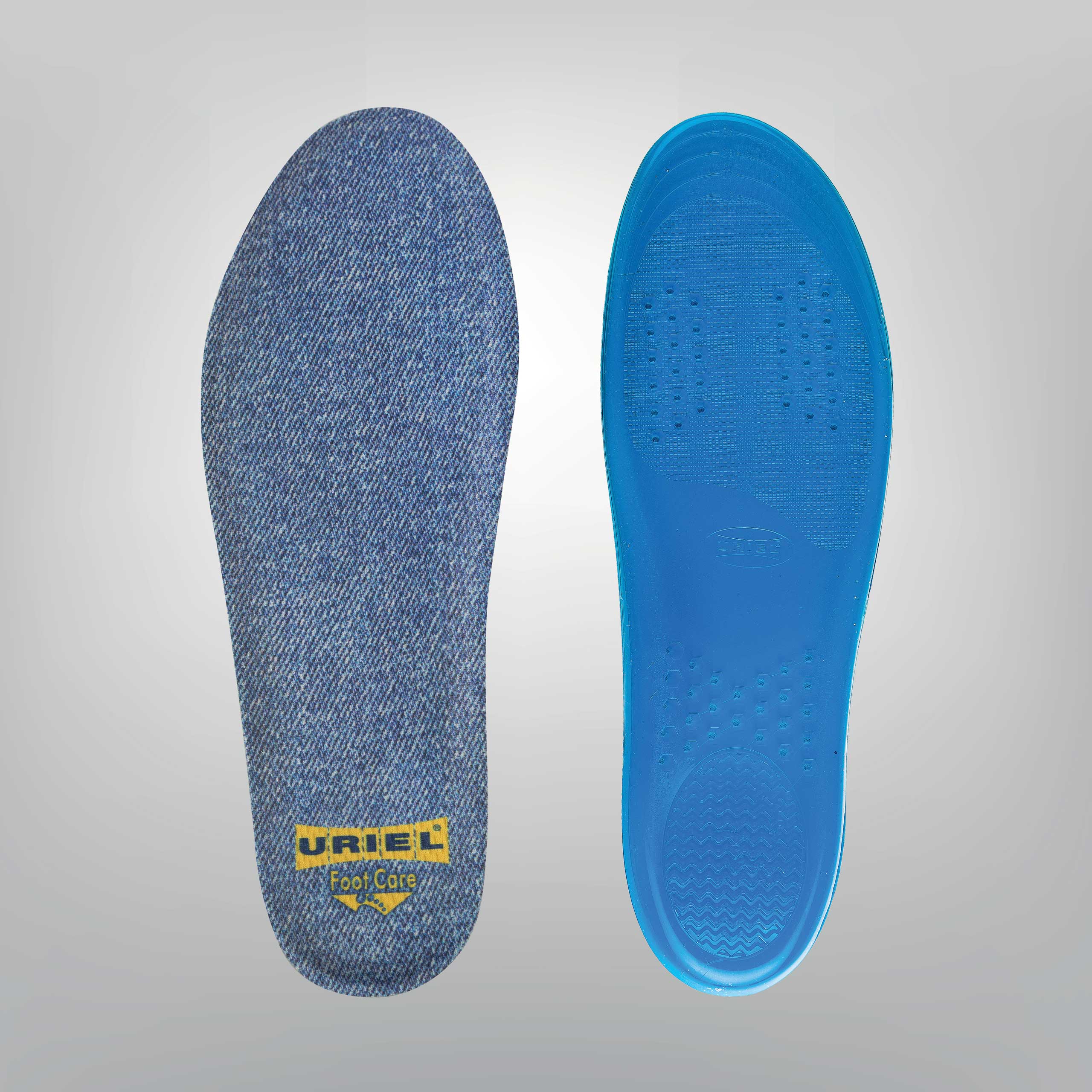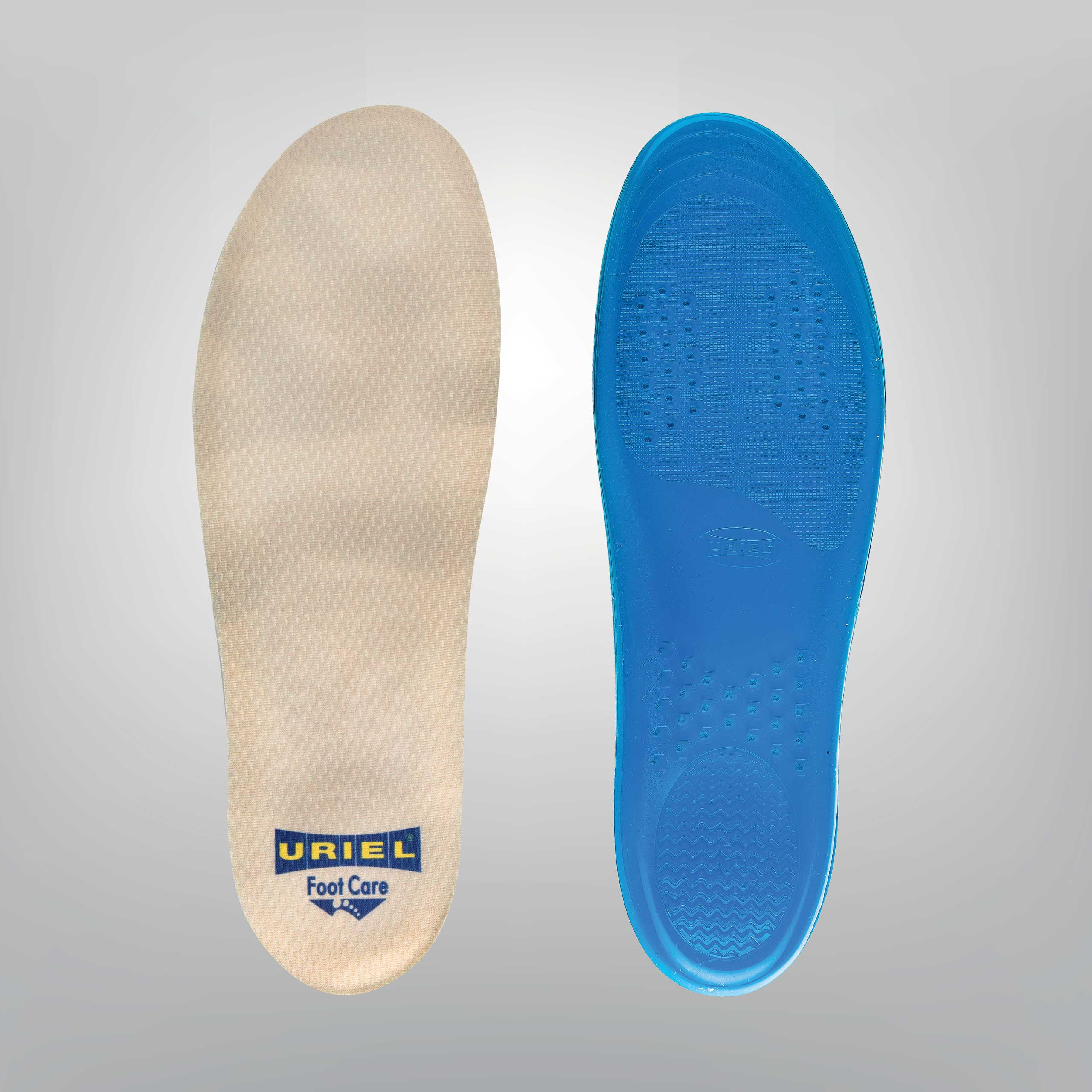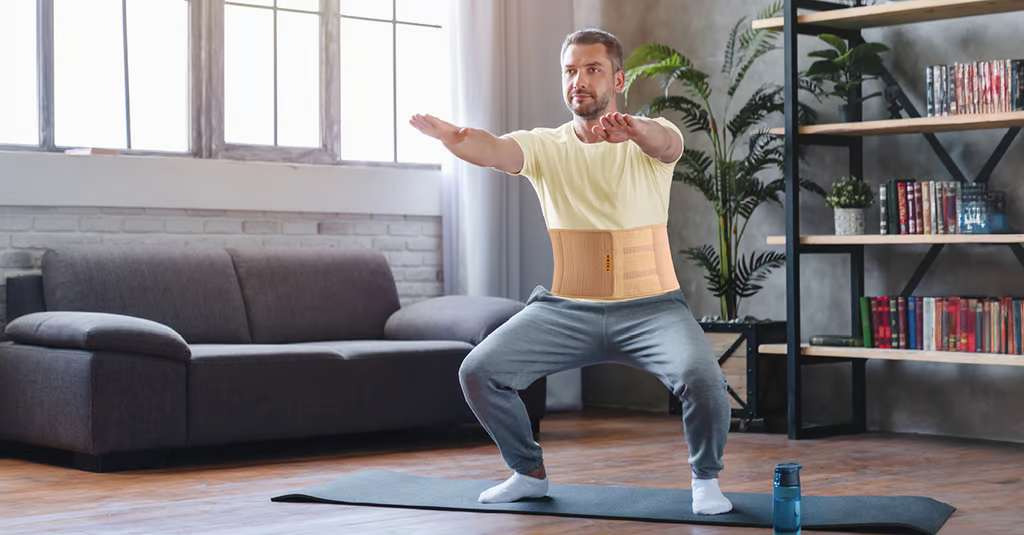


Memory Foam Gel Insoles | 301
Memory foam gel comfort insoles for customized support
The sponge pads adapt to the shape of the foot, helping to reduce the pressure and load placed on them.
The bottom gel layer helps absorb shock, combined with the top sponge layer provides freshness and comfort throughout the day.
Medical indications:
- Early stages of diabetes or other health problems affecting the feet
- Foot or heel pain
- Flatfoot (flat arch) or high arch
- Foot inflammation (plantar fasciitis)
- Strain on the feet due to prolonged standing or walking
- Intense sports activity
- Physical work that requires prolonged standing
- They can help improve comfort and personalized support for your feet, thereby reducing pain and increasing your overall feeling of comfort throughout the day.

Dimensions
EU 40-45 | US 7-12 EU 36-40 | US 5.5-9.5
Extended description
Product purpose:
Gel insoles have an anatomical structure and a special design that provides good support and shock absorption for the foot.
Planning and design:
The upper fabric layer is made of antibacterial microfiber, with a high coefficient of friction to prevent the foot from slipping on the insole. The fabric layer helps prevent the formation of unpleasant odors and blisters. The gel layer is designed as a honeycomb to strengthen the structure of the insole, create airiness and maintain the freshness of the foot over time. In the back and lower half of the insole there is a reinforcement made of TPE (Thermoplastic Elastomer), which aims to stabilize the heel during the heel trike phase of the walking cycle.
Shock absorption and load distribution:
The unique properties of the gel allow for shock absorption and load distribution when walking and running. Load distribution is important to reduce point load on the foot.
How do gel insoles work?
The combination of technologies and the unique design of the gel insoles provide shock absorption when stepping, load distribution and improved stability when walking. These features result in maximum comfort at every stage of the gait cycle, both from a biomechanical and foot hygiene perspective.
User manual
- Before inserting the gel insoles, the previous insoles must be removed from the shoes.
- The insoles should be cut according to the size of the inner surface of the shoe.
- The interior of the shoe must be cleaned and make sure there is no dirt or unwanted internal bumps on the sole of the shoe.
- The insoles should be inserted, each into its correct shoe. After insertion, slide your hand along the entire length of the insole and make sure there are no creases.
- Wear the shoes with the insoles and check that they fit the shoe. If necessary, remove the insole and make the necessary repairs.
- It is recommended to replace the insoles approximately once a year, depending on the distance walked with them and the user's weight.
Our expert advice
EU 40-45 | US 7-12 EU 36-40 | US 5.5-9.5
Product purpose:
Gel insoles have an anatomical structure and a special design that provides good support and shock absorption for the foot.
Planning and design:
The upper fabric layer is made of antibacterial microfiber, with a high coefficient of friction to prevent the foot from slipping on the insole. The fabric layer helps prevent the formation of unpleasant odors and blisters. The gel layer is designed as a honeycomb to strengthen the structure of the insole, create airiness and maintain the freshness of the foot over time. In the back and lower half of the insole there is a reinforcement made of TPE (Thermoplastic Elastomer), which aims to stabilize the heel during the heel trike phase of the walking cycle.
Shock absorption and load distribution:
The unique properties of the gel allow for shock absorption and load distribution when walking and running. Load distribution is important to reduce point load on the foot.
How do gel insoles work?
The combination of technologies and the unique design of the gel insoles provide shock absorption when stepping, load distribution and improved stability when walking. These features result in maximum comfort at every stage of the gait cycle, both from a biomechanical and foot hygiene perspective.
- Before inserting the gel insoles, the previous insoles must be removed from the shoes.
- The insoles should be cut according to the size of the inner surface of the shoe.
- The interior of the shoe must be cleaned and make sure there is no dirt or unwanted internal bumps on the sole of the shoe.
- The insoles should be inserted, each into its correct shoe. After insertion, slide your hand along the entire length of the insole and make sure there are no creases.
- Wear the shoes with the insoles and check that they fit the shoe. If necessary, remove the insole and make the necessary repairs.
- It is recommended to replace the insoles approximately once a year, depending on the distance walked with them and the user's weight.
Blog

Treating Lower Back Pain: 6 Tips to Improve Quality of Life
Suffering from lower back pain? You are definitely not alone. There are many ways to deal with one of the most common pains in the world, here are some of them. It's time to relieve the pain.

The Secret to a Healthy Back: The Complete Guide to Improving Posture and Alleviating Back Pain
Is back health important to you? Get the 'Secret of a Healthy Back' guide containing information, tips and useful advice for relieving back pain. By Oriya Moran, Chief Physiotherapist Download t...

Kinesio tape or professional elastic bandage?
Suffering from sports injuries, bruises or simply pain caused by medical problems? Get to know the variety of dressing products that will support you. When should we use kinesiology tape and why d...
